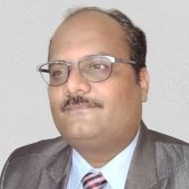New Technologies in Visible Light Communications
A special issue of Electronics (ISSN 2079-9292). This special issue belongs to the section "Microwave and Wireless Communications".
Deadline for manuscript submissions: closed (30 September 2023) | Viewed by 14609
Special Issue Editors
Interests: free space optical (FSO) communications; channel modeling; hybrid RF/FSO communications; LiFi and FSO for 5G networks; digital signal processing; modulation schemes
Special Issues, Collections and Topics in MDPI journals
Interests: visible light communication; LiFi; color converters; optical antennas; light-emitting diodes (LEDs); photodetectors
Special Issues, Collections and Topics in MDPI journals
Interests: visible light communication and positioning; advanced modulation; multiple access and multiplexing
Special Issues, Collections and Topics in MDPI journals
Special Issue Information
Dear Colleagues,
Optical wireless communication (OWC) that includes visible light communication (VLC) or light-fidelity (LiFi) and free space optical (FSO) communication has attracted a tremendous amount of attention in a number of applications, such as smart industry, smart cities, smart transport, smart connected buildings/homes, and autonomous vehicles. LiFi and FSO communication are envisioned to implement and support 5G wireless networks. However, there are several main research challenges within these communication technologies, including the need to achieve high data rates in real life applications, ubiquitous connectivity, shadowing and co-channel interference effects, dimming capabilities, machine-to-machine connectivity, the need to improve optical front ends including color converters and different noise factors such as turbulence and fog and cost of systems, etc. In this Special Issue, we accept original research and review articles on new technologies in optical wireless communications, including but not limited to the following topics:
- Visible light communication (VLC)/LiFi;
- Advanced modulation schemes;
- Optical channel modeling and noise mitigation techniques;
- Vehicle-to-vehicle communication;
- Localization and positioning;
- Spatial diversity/optical MIMO;
- Optical satellite communication;
- Optical wireless communication for smart cities and medical applications;
- Machine-to-machine communication;
- VLC-based IoT;
- Hybrid RF/FSO links;
- Organic optoelectronics devices;
- New materials for color converters.
Dr. Muhammad Ijaz
Dr. Tariq Sajjad
Dr. Chen Chen
Prof. Dr. Manav Bhatnagar
Guest Editors
Manuscript Submission Information
Manuscripts should be submitted online at www.mdpi.com by registering and logging in to this website. Once you are registered, click here to go to the submission form. Manuscripts can be submitted until the deadline. All submissions that pass pre-check are peer-reviewed. Accepted papers will be published continuously in the journal (as soon as accepted) and will be listed together on the special issue website. Research articles, review articles as well as short communications are invited. For planned papers, a title and short abstract (about 100 words) can be sent to the Editorial Office for announcement on this website.
Submitted manuscripts should not have been published previously, nor be under consideration for publication elsewhere (except conference proceedings papers). All manuscripts are thoroughly refereed through a single-blind peer-review process. A guide for authors and other relevant information for submission of manuscripts is available on the Instructions for Authors page. Electronics is an international peer-reviewed open access semimonthly journal published by MDPI.
Please visit the Instructions for Authors page before submitting a manuscript. The Article Processing Charge (APC) for publication in this open access journal is 2400 CHF (Swiss Francs). Submitted papers should be well formatted and use good English. Authors may use MDPI's English editing service prior to publication or during author revisions.
Keywords
- visible light communication (VLC)/LiFi
- free space optics (FSO)
- visible light positioning (VLP)
- vehicle-to-vehicle VLC
- VLP and RFID localization
- organic optical devices
- color converters








